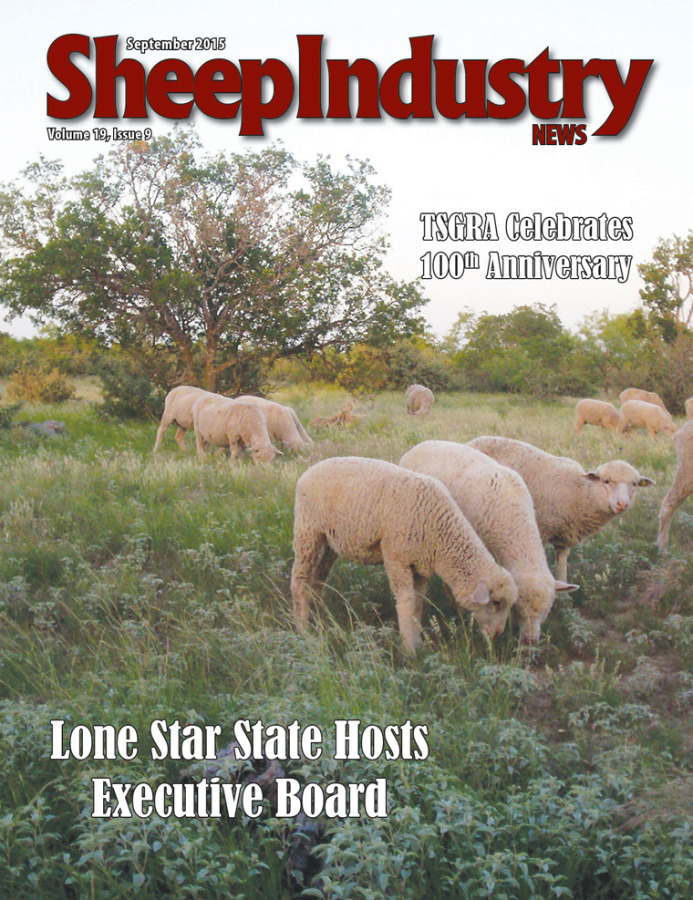
- September 2015
- President’s Notes
- Producers Testify in Wyoming
- Let’s Grow Announces Second Round of Funding
- Lone Star State Celebrates Two Anniversaries
- Helle Wins Preliminary Battle in Federal Grazing Lawsuit
- Lamb Jam Master To Be Decided in New York
- Fibrelux Shows Value in Early Tests in San Angelo
- Obituaries
- NSIIC Accepting Grant Proposals
- New Research Journal Article Posted
- Market Report
- Sheep News In Brief
- The Last Word
Producers Testify in Wyoming
Two Wyoming sheep producers gave members of the Committee on Oversight and Government Reform Subcommittee on the Interior a realistic look at how recent federal proposals might affect the livelihood of not just sheep producers, but also the lives of countless others in their communities. The subcommittee met Aug. 6 at the Uinta County Library in Evanston, Wyo., with Rep. Cynthia Lummis (Wyo.) and Rep. Rob Bishop (Utah) in attendance.
The field briefing was conducted to look at issues impacting livestock grazing in the American West, examining the various regulatory burdens that are being placed on the grazing industry by the federal government.
“I am the sixth generation to operate our family ranch,” wrote Shaun Sims in a prepared statement to the subcommittee. “I take pride in the fact that my family has been agriculture producers since 1865 in the Almy area just north of here. My biggest fear is that due to these upcoming decisions and the litigious attacks on grazing, that our ranch and others will come to an end on my watch.”
The Sims Sheep Company of Evanston has concerns about changes to the H-2A sheepherder’s program, as well as the loss of grazing U.S. Forest Service allotments due to perceived health issues in bighorn sheep.
Concerning the Department of Labor’s proposed changes to the H-2A program, Patrick O’Toole of the Ladder Ranch wrote, “No one, including the University of Wyoming, who has analyzed these proposals comes to any conclusion other than the demise of the range sheep industry. The country would lose an industry which supports multi-generational families, which have overcome years of challenges to remain in business today. Ranches steadily support businesses in rural communities, year in and year out. They are customers for gas stations, grocery stores, feed stores, garages – the list goes on. They are taxpayers who serve on local boards, conservation districts, health care districts, county commissions. They are part of the underpinning of the rural communities.”
ASI, through the Public Lands Council, also submitted comments for the subcommittee.
“Domestic sheep and bighorn sheep have co-existed in many of the same areas for decades without negative impacts to the bighorn herds,” the statement read. “Despite this fact, the U.S. Forest Service prohibited 13,000 sheep from grazing on their historic grazing allotments within the Payette National Forest in Idaho, putting one ranch out of business entirely and drastically reducing the operations of three other ranches. The Payette decision is being mirrored in other national forests with bighorn sheep populations and the BLM is considering grazing restrictions of BLM lands. About 50 percent of the U.S. domestic sheep herd spends some time on public lands, so this will have a devastating impact on the sheep industry, affecting not only the hard working families who own sheep operations, but meat packing plants, woolen mills, and the U.S. military, which purchases 20 percent of the nation’s wool production to equip U.S. service men and women.”
The PLC also weighed in on proposed changes to H-2A, wildfires on public lands and the recent designation of national monuments through the Antiquities Act. Additional witnesses included Elko County (Nevada) Commissioner Demar Dahl, fifth-generation rancher Karen Budd Falen of Budd Falen Law Offices in Cheyenne, Wyo., and Utah Farm Bureau Federation Chief Executive Officer Randy Parker.
For links to the complete statements by Sims and O’Toole, visit Sheepusa.org/IssuesPrograms_LegislativeActionCenter.

